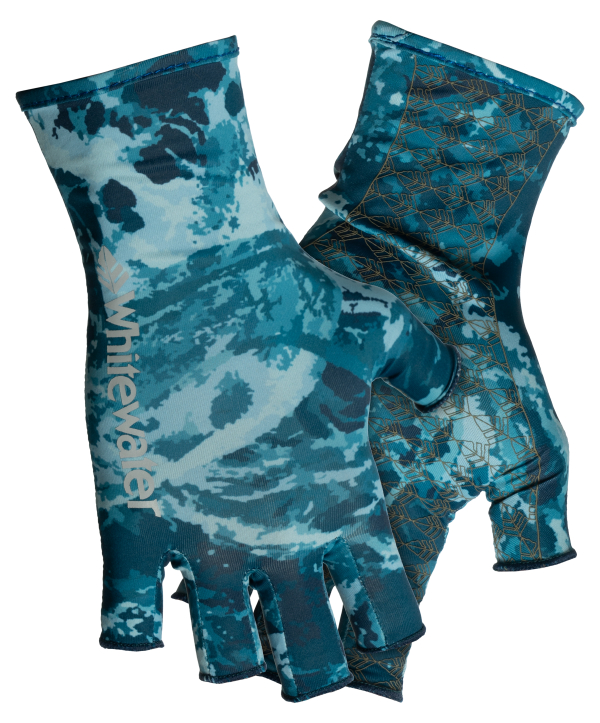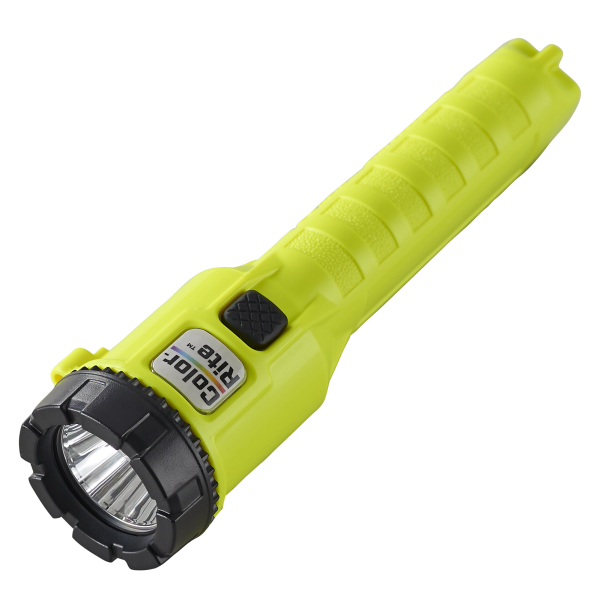Motor City Walleyes
 |
Tips and tricks learned on the Detroit River can play into your walleye fishing hand.
Among bucket-list spring walleye fishing destinations, the Detroit River is legendary. With both trophy potential and numbers, the river draws scores of anglers each year, many partaking in the run as an annual rite.
One of those anglers is Judson Rodriguez, who escorted Whitewater Fishing staff on the metro moving waters, all in search of big, photo-worthy fish. Below, Judson offers his advice for anglers thinking about fishing the Detroit—including the when, where, and how of it.
“In early April, the water temp was between 43.3- and 43.8 degrees. As we got into a little more stained water, the water temp came up a bit. We fished a lot of those water areas where clear water met dirty and found fish there, which is typical,” says Rodriguez.
“There was a good mix of spawning females with lots of smaller males in the mix. We started fishing at 6:30 a.m. each day so we could see what we were doing. The best bite is typically around daybreak, so we had about an hour to pluck big females. Then, the rest of the day, it’s sorting males until about 6 p.m., and then you’ve got a shot at another big one.”
Rodriguez says time of day and water clarity are consistently two big factors on the Detroit River and other major river systems—as well as water temperatures between 40 and 50 degrees. “For us, it was a mix of big fish still hanging around and others filtering back out.”
Technique
How do you catch early-season Detroit River walleyes? Rodriguez calls the way he and locals fish “drop-drag jigging.”
“The key is keeping your jig on bottom. And the current can be strong, so we’re using anything from ¾- to 1-ounce jigs. On this recent trip, we started with minnows but only caught a few fish. So, we switched to either a minnow-shaped plastic or worm. Some years the worm profile works best, other years a minnow shape. This year it was the minnow profile. I’d say 90% of our fish came on a blue with chartreuse tail finesse soft plastic minnow and a 1-ounce, locally-made jig.”
Besides the baits, how you present them is super important. “Put the head of your trolling motor into the wind, regardless of the current direction. It’s imperative to stay vertical while jigging, and if your motor isn’t headed into the wind, you’ll get blown around,” offers Rodriguez.
Where To Fish
“We fished out of Wyandotte up to the new Gordie Howe Bridge; that whole stretch is good. But the bigger fish came from near the steel mill, just north of the Wyandotte Public Ramps and then between Fighting Island and what’s called Mud Island. We caught most of our fish on the inside, western, U.S. side of Fighting Island. And then just along the steel mill; the steel mill was the big fish producer for sure.”
The Right River Stuff: Rods, Reels, Line, & Jigs
“I use a 6’ 3” St. Croix Eyecon medium-power, extra-fast action rod with 10- to 15-pound chartreuse Fireline braid so I can tell when I’m on bottom or even get a bite sometimes. Especially in lowlight conditions, black and green lines get lost. In terms of spooking fish, the bright line is really inconsequential since you’re using a 10-pound fluorocarbon leader to a barrel swivel and a big, heavy jig.”
“Most of the jigs we use are made locally and have a pronounced red eye. The head is kind of pill-shaped, as opposed to a round ball-head so it cuts through the current. A lot of the specialized, locally-made jigs are built around sickle-style hooks, too, so big fish don’t come off when you’re playing them in the current. Definitely get some jigs at the local shops when you come out. Regular walleye jigs don’t work very well. Dip Net Bait & Tackle has a good selection and can help get you outfitted right to catch fish,” says Rodriguez.
Of their recent trip, Rodriguez says the Whitewater Fishing crew caught three fish over 27 inches and multiples between 24- and 27 inches.
“The big females had kind of stopped biting, so we moved off of the break walls into the main river channels and started filling out our limit with quality 17- to 20-inch fish. Along the way, I was able to point out the new bridge construction, and areas with amazing clear water for an urban area. It’s a really cool place to fish,” notes Rodriguez.
A Continuing Bite?
So, while the big fish run is pretty much done, Rodriguez says that the drop-drag technique will work on the river through early June.
“You’ll still catch fish jigging after mid-April, but they’ll be smaller, legal ‘keeper’ fish, mostly in the 15- to 20-inch range. What can also be effective is to run a three-way rig or a bottom bouncer and drag ‘crawler harnesses slowly up river or run a controlled drift downriver just to get the blade spinning somehow.”
Rodriguez adds: “I would say the majority of anglers start switching from jigging to trolling and drifting after the second week of May. You get a little more reaction getting that blade in front of their face flicking and provoking that bite.”
Gear Up: Windy & Wet
Spring weather can be unpredictable on the Detroit River with windy and wet days.
“The wind can really get whipping. Between those islands on the river, it creates a chute, so it’ll be a lot windier than you’d think from other area weather. One thing that I really appreciated about Whitewater’s Great Lakes Pro jacket and bib was although it’s designed to keep water off of you in the elements, it’s also helps in the wind when it’s not raining—and keeps you warm.”
Of the suit’s numerous features, Rodriguez likes the Velcro-sealing wrists on the jacket, which allow him to dunk his hand in the water to help land a fish or grab bait from a bucket without getting the skin on his wrists and arms wet.
“To stay comfortable on the river you really need flexible gear like the Whitewater stuff that allows great freedom of movement and wind and rain protection, which is kind of the norm,” says Rodriguez.
Where To Stay/Launch Your Boat
Given so many municipalities along the river in the Detroit area, it can be difficult to figure out where to both get a room and launch with easy access to the best river stretches. Rodriguez recommends staying in Southgate, which is under 10 minutes from the Wynadotte public boat ramp. As well, he says the Wyandotte Marina is a great place to launch because they have numerous boat ramp lanes, you don’t have to wait to put in your boat—and it only costs $15 to launch and park.
At the end of the day, the Detroit River is a bucket-list walleye destination. If you’re a fan of spring walleye fishing, Rodriguez says informed anglers are pretty much guaranteed an “eater” limit and good shot at a 10-pound-plus trophy, if you put in enough time.
Sounds good.






